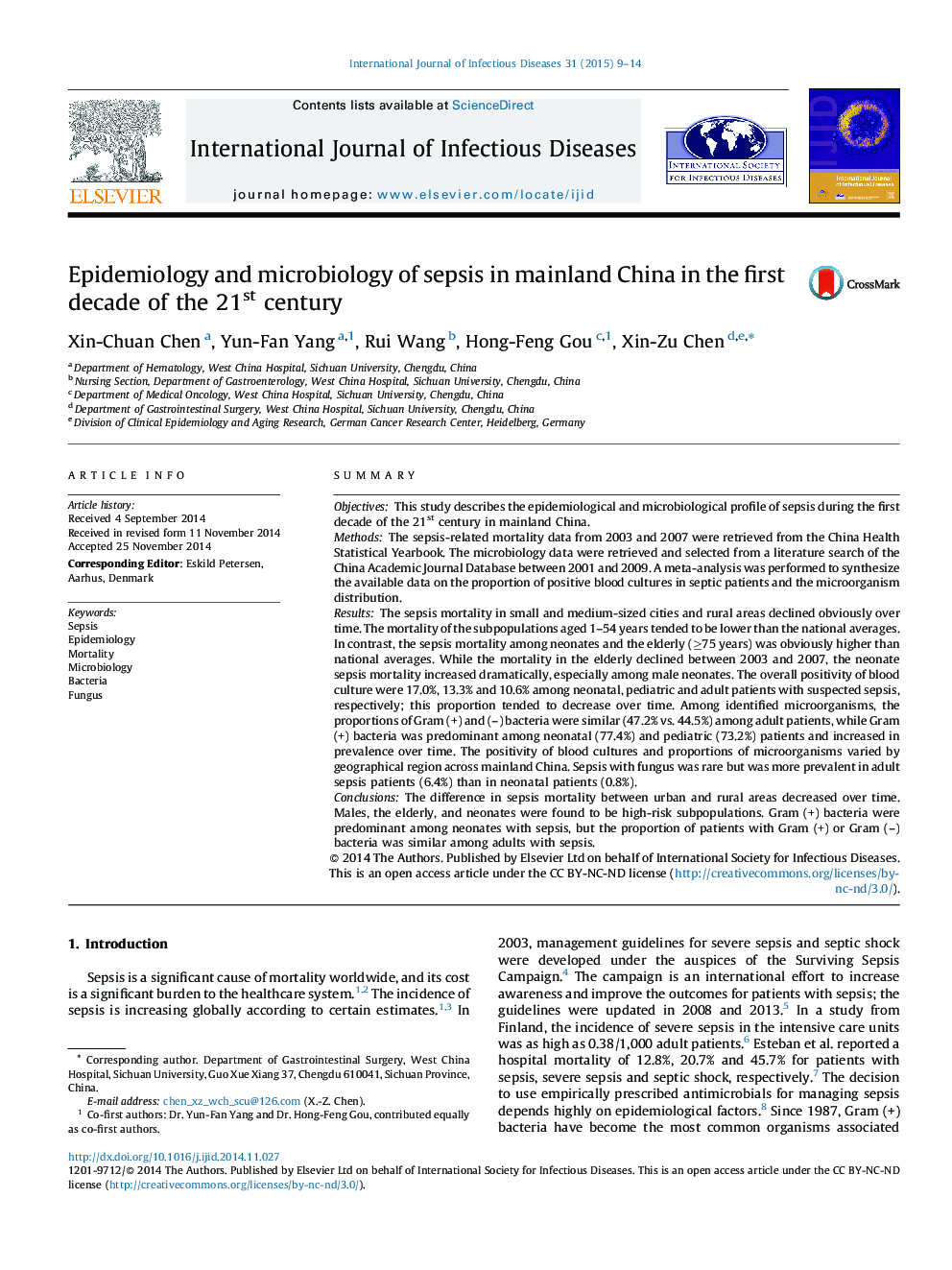| کد مقاله | کد نشریه | سال انتشار | مقاله انگلیسی | نسخه تمام متن |
|---|---|---|---|---|
| 3362229 | 1592064 | 2015 | 6 صفحه PDF | دانلود رایگان |
• Differences in the mortality of sepsis become smaller among major cities, small sized cities, and rural area in mainland China.
• Males, elders, or neonates are subpopulations at high risk of mortality from sepsis.
• Proportion of Gram (+) bacteria inducing sepsis was predominant among neonates, but equal to that of Gram (–) bacteria among adults.
• The “Surviving Sepsis Campaign” should be further practiced nationwide for improving outcomes of patients with sepsis in mainland China.
SummaryObjectivesThis study describes the epidemiological and microbiological profile of sepsis during the first decade of the 21st century in mainland China.MethodsThe sepsis-related mortality data from 2003 and 2007 were retrieved from the China Health Statistical Yearbook. The microbiology data were retrieved and selected from a literature search of the China Academic Journal Database between 2001 and 2009. A meta-analysis was performed to synthesize the available data on the proportion of positive blood cultures in septic patients and the microorganism distribution.ResultsThe sepsis mortality in small and medium-sized cities and rural areas declined obviously over time. The mortality of the subpopulations aged 1–54 years tended to be lower than the national averages. In contrast, the sepsis mortality among neonates and the elderly (≥75 years) was obviously higher than national averages. While the mortality in the elderly declined between 2003 and 2007, the neonate sepsis mortality increased dramatically, especially among male neonates. The overall positivity of blood culture were 17.0%, 13.3% and 10.6% among neonatal, pediatric and adult patients with suspected sepsis, respectively; this proportion tended to decrease over time. Among identified microorganisms, the proportions of Gram (+) and (–) bacteria were similar (47.2% vs. 44.5%) among adult patients, while Gram (+) bacteria was predominant among neonatal (77.4%) and pediatric (73.2%) patients and increased in prevalence over time. The positivity of blood cultures and proportions of microorganisms varied by geographical region across mainland China. Sepsis with fungus was rare but was more prevalent in adult sepsis patients (6.4%) than in neonatal patients (0.8%).ConclusionsThe difference in sepsis mortality between urban and rural areas decreased over time. Males, the elderly, and neonates were found to be high-risk subpopulations. Gram (+) bacteria were predominant among neonates with sepsis, but the proportion of patients with Gram (+) or Gram (–) bacteria was similar among adults with sepsis.
Journal: International Journal of Infectious Diseases - Volume 31, February 2015, Pages 9–14
